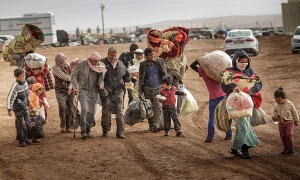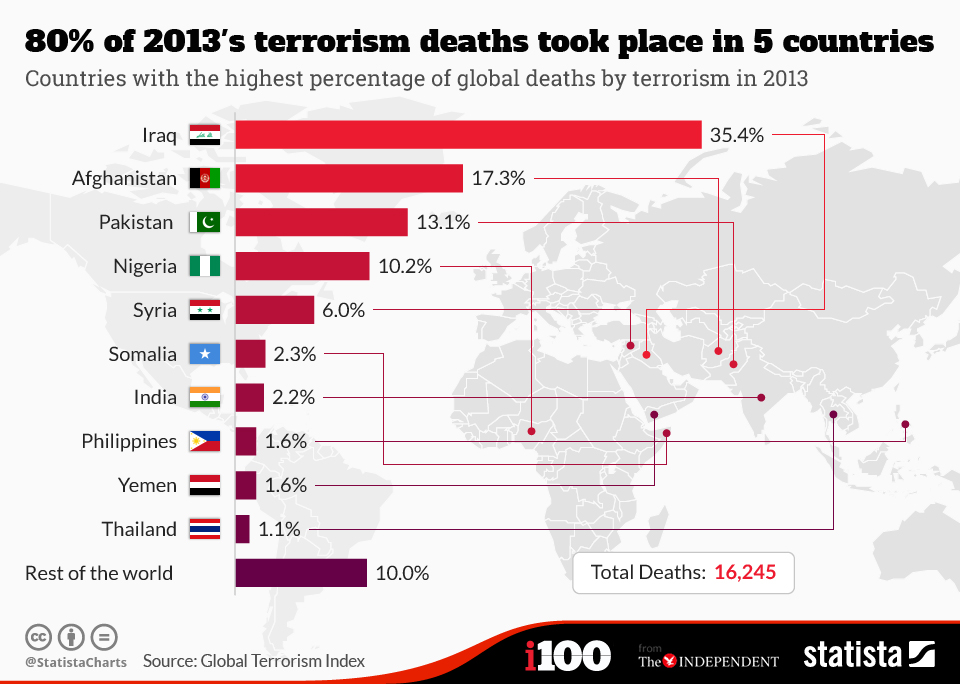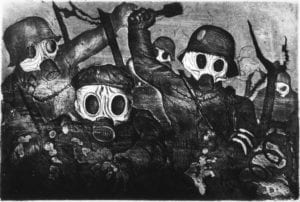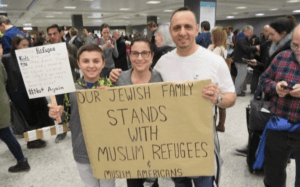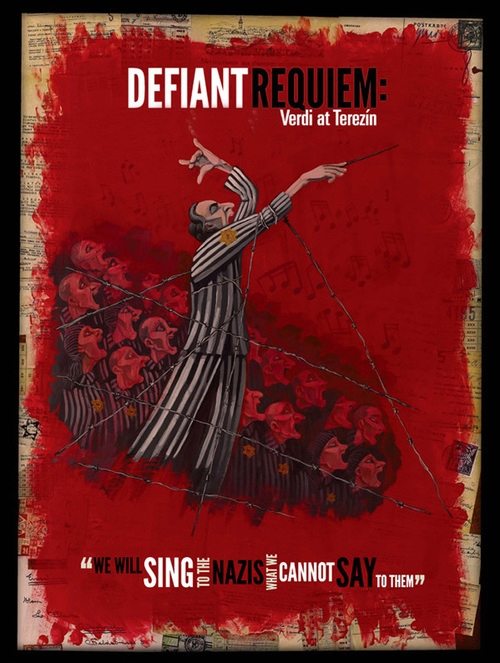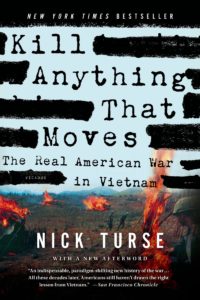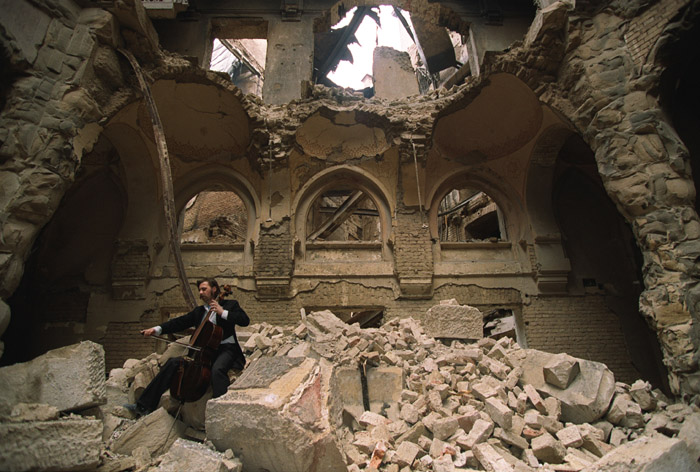Here are a few facts to consider while contemplating the events of recent days and navigating the torrent of foolish, hateful propaganda unleashed by politicians and commentators in this country (the U.S.):
● Might as well confront this right away, since so many people are thinking about it: The ISIS murderers are “Muslims” to the same degree that King Leopold II, who you’ve probably never heard of, was a “Christian.” Leopold killed 10 million people in Congo between roughly 1878 and 1908. Others who called themselves Christians killed at least 100 million people in the 20th century, and violent extremists claiming the mantle of Hinduism, Buddhism, and Judaism commit atrocities that we usually understand have other causes — i.e., other than the supposed faiths of the perpetrators.
● Who suffers the most from terrorism? And from terrorism committed in the name of Islam? Muslims, by a large margin. More than 90% of the world’s terrorism victims are Muslim. For groups such as ISIS and al-Qaida, Muslim “apostates” are the principal enemy.
● The so-called Islamic State or ISIS or ISIL has no relation whatsoever to Islam. Most of its commanders were high-ranking officials in Saddam Hussein’s militantly secular, atheistic dictatorship. From what we can tell, a majority of its members, as revealed by a few courageous journalists who have interviewed them, know little or nothing about Islam. Like volunteers for other violent, right-wing military groups of the last centuries: they are young men (and some women) driven by a lust for adventure; criminal and violent proclivities; emotional and psychological imbalances; and assorted other factors.
And the refugees?
● SYRIAN REFUGEES DESPERATELY NEED HELP. This country of 23 million people (in March 2011) has been brutalized for years by one of the world’s worst dictatorships, and now is caught between Assad and ISIS. Roughly half the country’s 2011 population has been killed or drive into internal or external exile. Proportionately, this is perhaps the world’s greatest humanitarian catastrophe since 1945. (By numbers alone, Congo is the worst: more than 6 million killed in a series of wars since 1998. Congo’s current population is roughly 82 million.)
● Genocide is being committed in Syria against religious minorities, the large majority of them Muslims, in particular the Yazidis.
● To its shame, the United States has admitted merely 1,400 Syrian refugees since the civil wars began 4 1/2 years ago. As is always the case, the large majority of refugees are now inhabiting other poor countries: 2 million in Turkey, more than 1 million in Lebanon (where refugees constitute at least one-fifth of the country’s inhabitants), 800,000 in Jordan. (Of all the world’s 60 million refugees, more than 90% are in poor countries near the ones they fled.)
● Since September 11, 2001, the United States has admitted 750,000 refugees, including 6 thousand Syrians and tens of thousands of Muslims from the Middle East or elsewhere. Not a single one of them has been associated with a terrorist conspiracy or act. If ISIS or some other such group wishes to wreak havoc (which is likely), they would do it another way (by recruiting someone within the country they wish to attack, as in France, or maybe be taking advantage of the Visa-waiver program, which would be far easier).
● France – a few days after the horrifying Paris attacks – announced it would maintain its commitment to welcome 30,000 Syrian refugees. Perhaps unlike U.S. politicians and commentators, French politicians are capable of reading, listening to experts, and thinking calmly.
● The US government already has a very rigorous (overly rigorous and slow, in my view) process for admitting refugees from Syria.
● In the last week we in the United States have heard a barrage of racist and Islamophobic vitriol that surpasses anything in the last 14 years. The two leading Republican presidential candidates call for the Nazi-like registering and branding of Muslims and label Syrian refugees as “rabid dogs.” Roanoke, VA mayor David Bowers muses about the good ol’ days of the Japanese-American internment camps as a model for how to treat Muslims. (In fairness: after widespread criticism and mockery, he modified his statement.)
● Not for the first or last time, Gov. Pat McCrory has shamed and embarrassed our state, joining the parade of governors who (despite not having the legal authority) have declared their refusal to allow Syrian refugees to be sheltered in their states. NJ governor Chris Christie went so far as to announce that he would turn away a 5-year-old orphan rather than display an ounce of humanity or compassion. ISIS thanks all of you for playing into its strategy, which is to heighten “religious” tensions and conflict and give credence to their propaganda, that “the West” is at war with Islam.
● This sort of propaganda has direct consequences – that is, hate crimes against Muslims or those believed to be Muslim. (Sikhs and others have sometimes been victimized, as in the murders of 6 people in a Sikh temple in Wisconsin in 2012.)
● If you wish to live in fear of terrorism despite the miniscule chance you will be affected by it (you’ll be run off the road and killed by an iPhone-addicted idiot long before any terrorist harms you): Fear right-wing terrorism, a fear greater threat than “Islamist” terror. Europeans learned this the hard way, when Anders Breivik – a Norwegian fascist and self-proclaimed Christian Crusader who claimed to be combatting an imaginary “Muslim invasion” of Europe – killed 77 people, most of them youngsters, in 2011.
● Don’t fall for the oft-repeated but erroneous question (or accusation), “Where are the moderate, peaceful Muslims who oppose terrorism?” Answer: everywhere.

